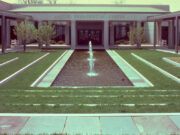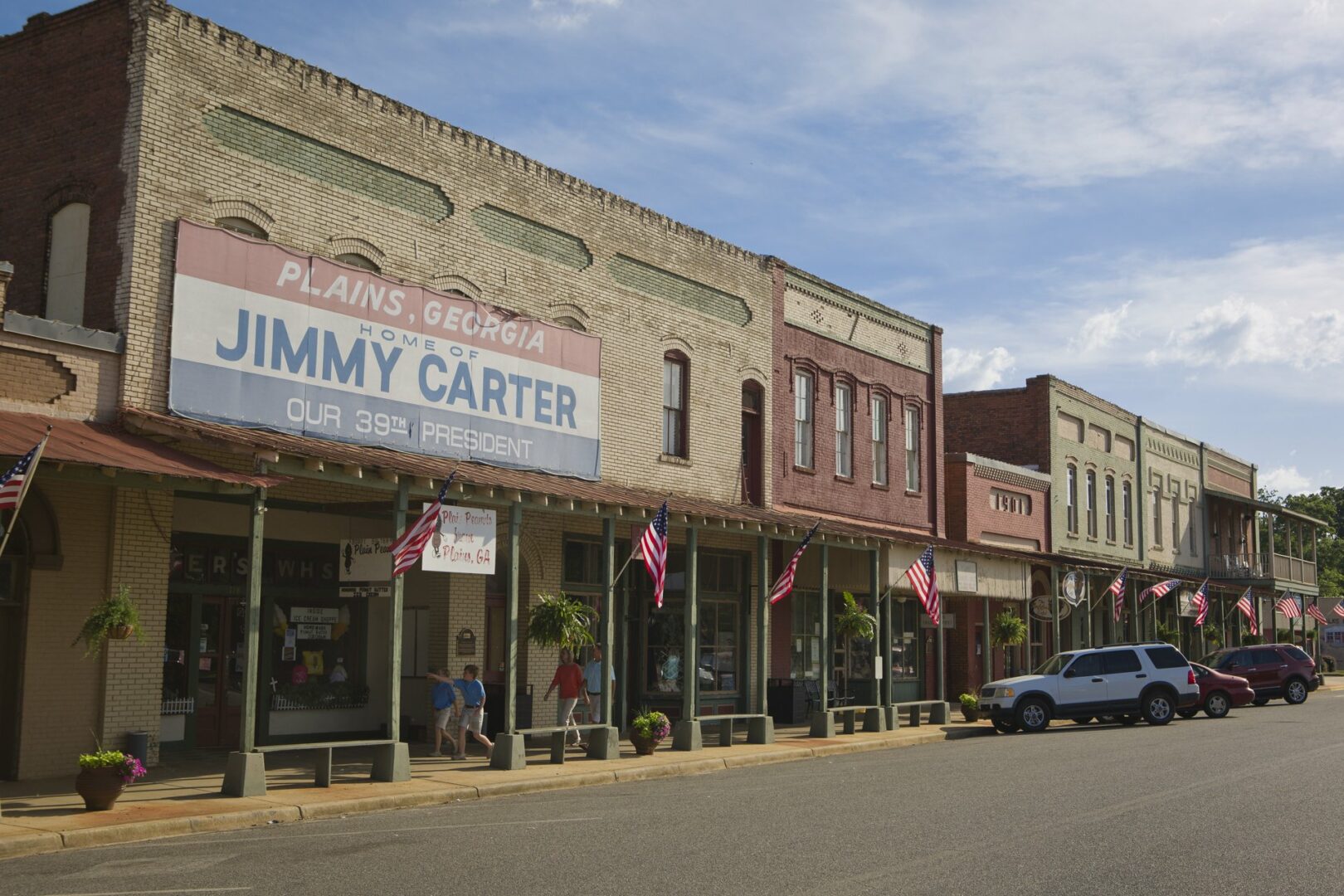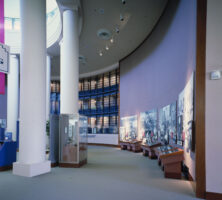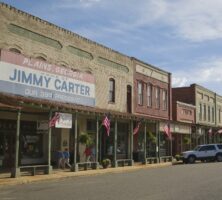The Jimmy Carter Library and Museum was dedicated in Atlanta on October 1, 1986. It is one of ten presidential libraries administered by the National Archives and Records Administration. It ranks with the National Park Service location in Plains as the indispensable site in Georgia for biographical background on the thirty-ninth president of the United States, Jimmy Carter (1977-81), and first lady Rosalynn Carter.
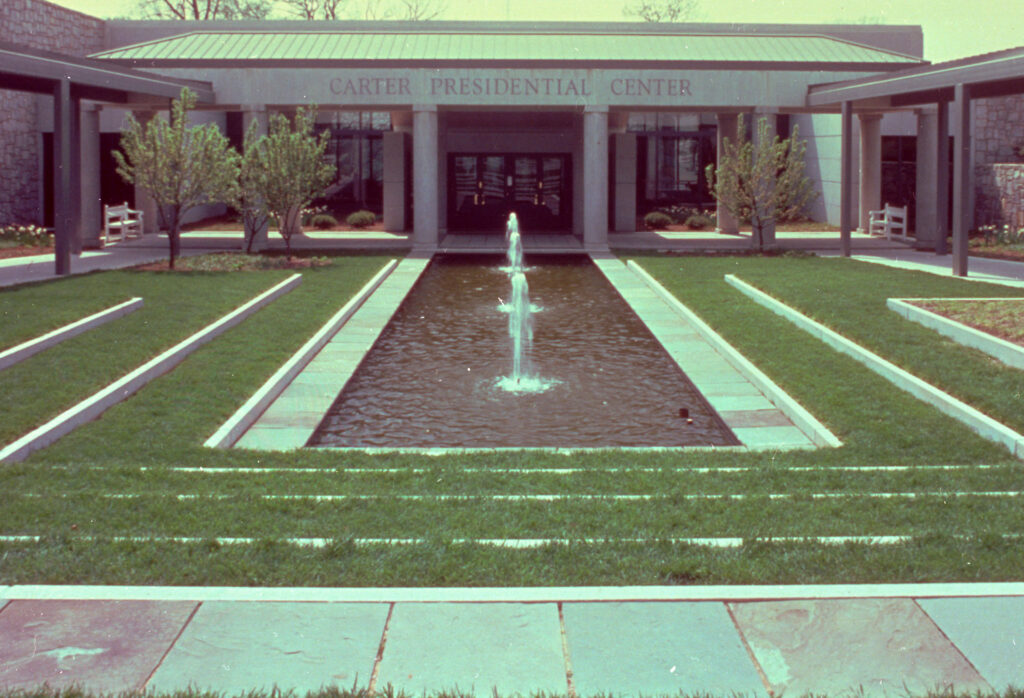
Courtesy of Jimmy Carter Presidential Library and Museum.
In May 2009 the facility closed for major renovations, including the construction of new exhibitions focusing on Carter’s postpresidential career. It reopened with a ceremony on October 1, 2009, Carter’s eighty-fifth birthday.
The library is located about two miles east of downtown Atlanta on one of the highest points in the city. Many visitors are attracted by thirty-five acres of beautiful landscape with a view of the downtown skyline. The library shares the grounds with the Carter Center, a nongovernmental organization in partnership with Emory University. The center’s current activities include peace and health programs around the world.
The presidential library system was inaugurated with the dedication of the Franklin D. Roosevelt Library in Hyde Park, New York, in 1941 but was systematized by the Presidential Libraries Act of 1955, under which the Carter Library was eventually created. On January 31, 1981, eleven days after leaving office, Carter signed a deed of gift, donating to the government many materials documenting his life and public service career. The only significant volume of material documenting Carter’s life and career outside the Carter Library are the records of his tenure as governor of Georgia (1971-75), which are available for research at the Georgia Archives, Vanishing Georgia Collection in Morrow.
Most visitors to the Carter presidential library tour the museum, which features a movie on the role of the president of the United States, a wall of twentieth-century American presidents, a full-size replica of the White House Oval Office, a “Town Meeting” exhibit that allows visitors to select from a menu of questions to receive a videotaped response from Carter, and displays on Carter’s childhood in Plains, his Georgia political career, the 1976 presidential campaign, various issues of the presidency, the role of the first lady, and the Nobel Peace Prize. Three or four temporary exhibits are typically displayed each year.
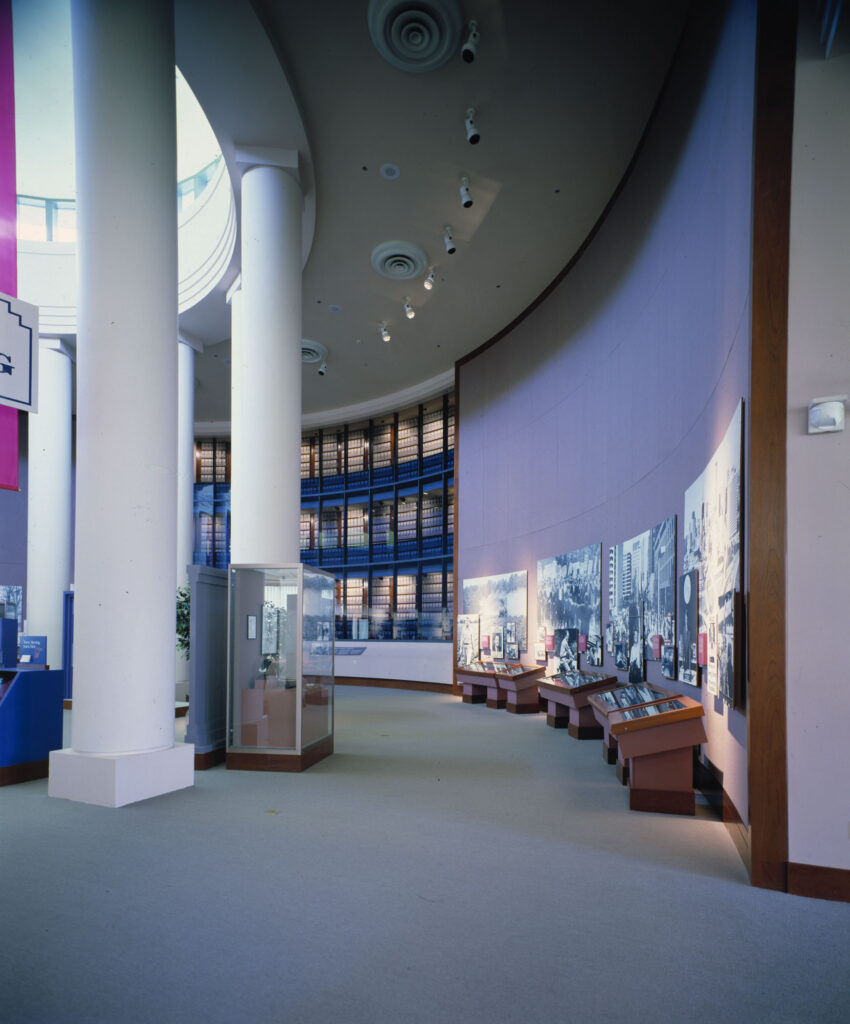
Courtesy of Jimmy Carter Presidential Library and Museum.
The archival holdings of the Carter Library are available to anyone over the age of fourteen who has need for the library’s unique resources. The research room first opened on January 28, 1987. Approximately one-third of the library’s material is currently available for research; the rest is still being preserved, arranged, and described. Review is also conducted to temporarily remove material that may not be opened because of national security considerations or restrictions contained in the donor’s deed of gift.
The major holding consists of the files kept in the White House during the Carter administration. Researchers may view letters from the public sent to President and Mrs. Carter and their aides, memoranda from federal agencies, copies of staff responses to the public and government officials, and internal White House communications. Information is available on the entire range of topics of concern to the president and the first lady. The Carters have also donated personal files from the years before and after they lived in the White House.
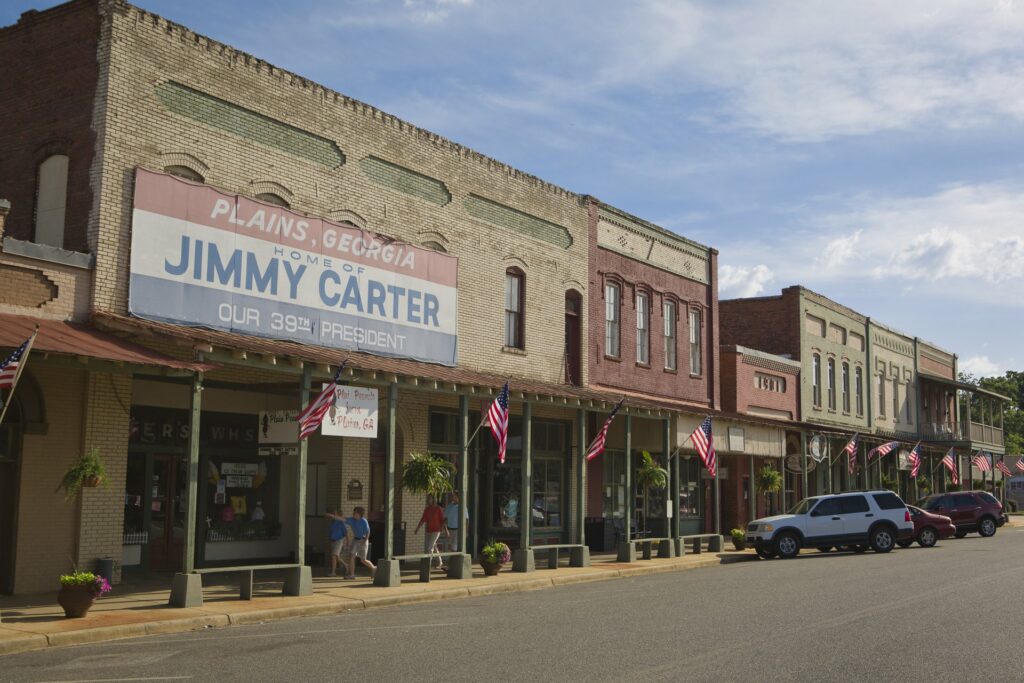
Courtesy of Explore Georgia.
The library also solicits material from others who have worked closely with the Carters. Furthermore, federal records that would normally be held in other National Archives and Records Administration facilities are placed at the Carter Library when it is believed that that location will be most convenient for researchers. Oral histories constitute a valuable resource, with more than 200 currently available for research.
Researchers may also be interested in the library’s collection of more than 40,000 objects or in the collection of books that deal with the Carter years. The library’s audiovisual collection is very large and valuable to scholars and publishers. Among the holdings are about 600,000 photo negatives, more than 1,500 videotapes, and approximately 3,700 audiotapes.
The library also seeks to serve the public through an Internet site. The Web site makes information available concerning the library and its services. Documents and audiovisual items are being added to the site to allow members of the public who cannot visit the library to have access to some of the library’s holdings.


